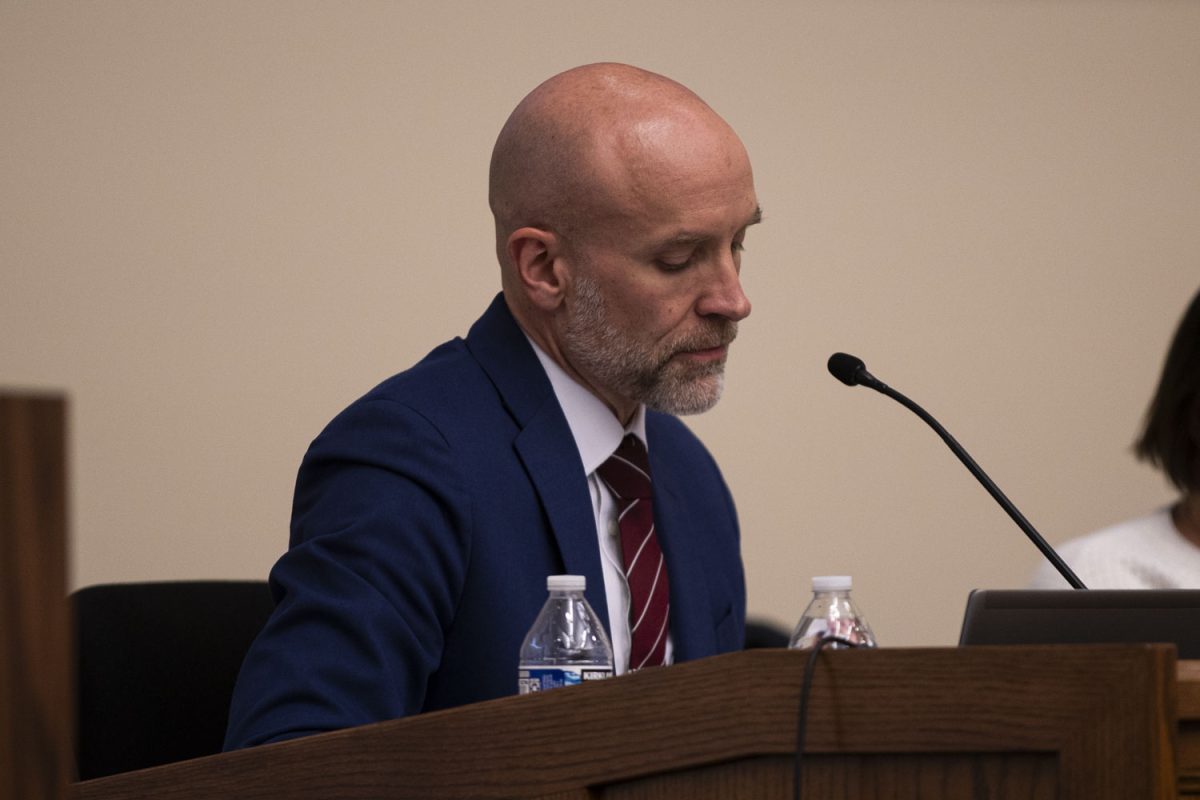With the rapid growth of technology reaching the hands of youths early on, and a majority of students reporting being victims of cyberbullying, Iowa City School District officials are continuing to address the issue in the hopes of decreasing the problem in Iowa City.
According to a survey by the Bureau of Justice Statistics, 52 percent of students reported being cyber bullied.
“Students at this age are still learning about social boundaries, and technology provides them with an avenue to communicate without the face-to-face,” North Central Junior High Principal Jane Fry said in an email. “The immediate feedback that they would, and should, receive doesn’t happen with the same context that gestures, voice tone, and facial expression can add.”
According to the Bullying Statistics website, cyberbullying has become the most prevalent type of bullying among teens. The most recent statistic, found in 2009, accounts 80 percent of all high-school students being bullied in some form online —numbers they said contribute to youth violence.
To combat these numbers, School District officials work to continue to educate students and faculty about bullying and to fight cyberbullying issues.
“We try to establish a learning environment and school climate where students treat each other with respect and kindness,” City High Principal John Bacon said. “We try to respond very aggressively so students know that is not tolerable in school.”
Bacon said school officials have to be cautious when addressing cyberbullying issues, saying the problem has to affect the students school work before they can get involved.
“If it’s not during the school day, the threshold for us, is ‘Is this causing disruption to the students’ learning environment,’ ” he said.
However, he said, City High tries to connect this issue with school in most cases, in order to provide sufficient help and control over the situation.
“If the alternative is ignoring it and the student gets tortured online, that’s not something I’m comfortable with,” he said. “Just because we can’t necessarily take disciplinary action, that doesn’t mean we can’t get involved.”
Former Iowa City School Board member Sarah Swisher said throughout her years on the board, she witnessed, and participated in, many discussions involving the issue of cyber bullying. She said she thinks the cases of cyberbullying are improving as schools take more notice of the issue.
“Students in the Iowa City district feel safer and the reported amount of cyberbullying … has been steadily dropping as measures of safety in schools has gone up,” she said. “[Teaching good behavior] and how to communicate peacefully and non-aggressively … absolutely has a place in the district.”
Although Bacon said he has not noticed any significant increase or decrease in cyberbullying cases at the high-school level, he maintained the most important aspect of preventing an increase is remaining proactive and ensuring widespread awareness of the issue.
“We’re not working with little kids here; we’re working with young adults who are very capable of helping us meet our goal of having an outstanding learning environment,” he said.
Fry said education is the most important aspect to address at the junior high level as well. Librarians and teachers at North Central continuously review bullying policy and relay information to students, she said.
“We want students to understand the impact of their actions and be able to apply the concepts they have been taught across any type of technology that comes their way,” Fry said.
However, she said, aiming to monitor all bullying is unrealistic. She cited responding to reported and witnessed cases, as well as educating the community is the extent to which the school system can monitor aggressive and hateful behavior.
“If we think we can monitor it all and catch it all, we will be deluding ourselves,” she said. “This type of monitoring will distract from our first mission, which is to educate our children.”






